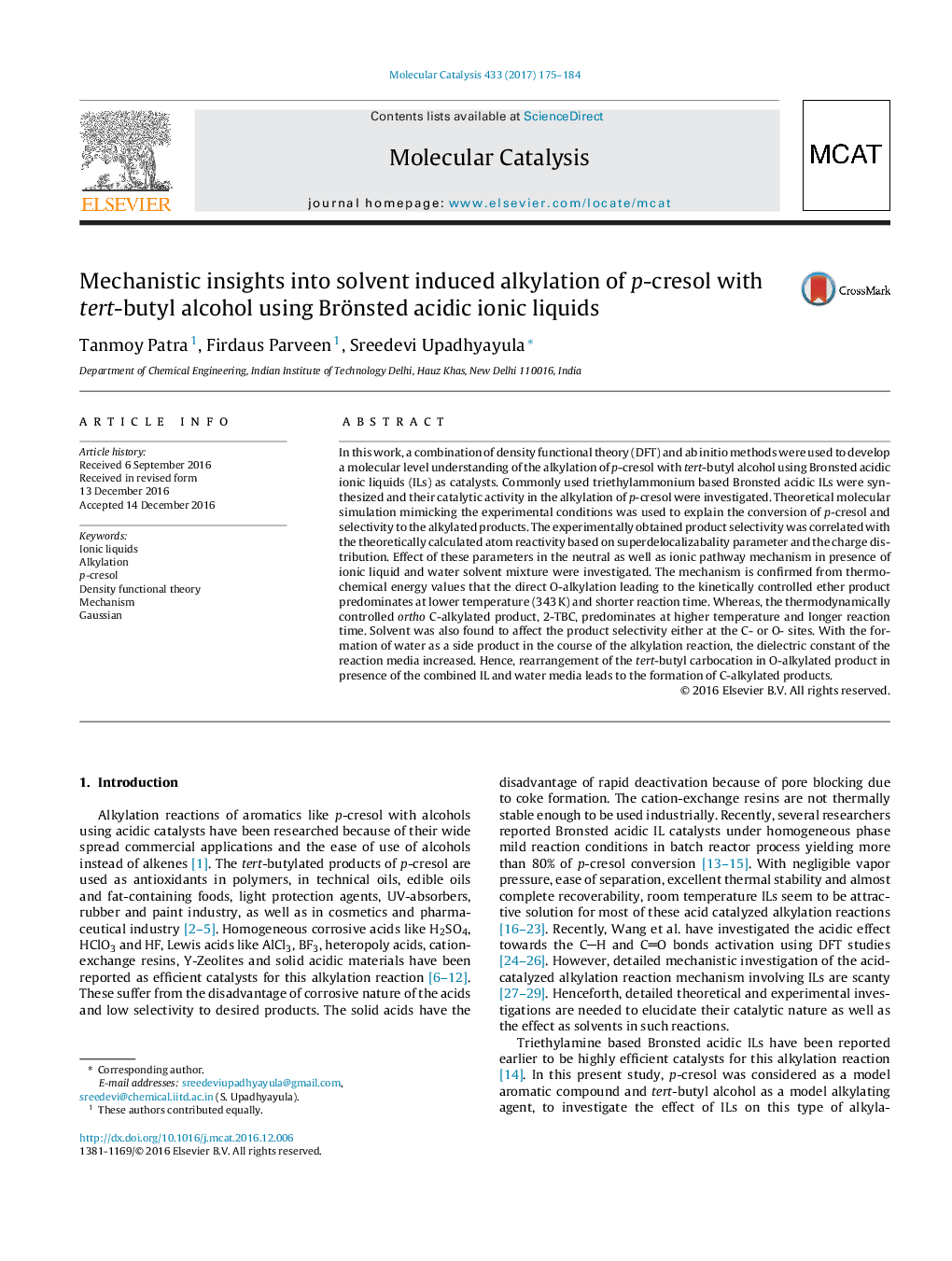| Article ID | Journal | Published Year | Pages | File Type |
|---|---|---|---|---|
| 6448851 | Molecular Catalysis | 2017 | 10 Pages |
â¢Alkylation of p-cresol using Bronsted acidic ionic liquids as catalyst.â¢Mechanistic insights including the effect of solvents.â¢Higher selectivity to ether product at shorter reaction time.â¢Theoretical studies to correlate acidity and catalytic activity of the catalysts.â¢Estimation of charge distribution and superdelocalizability to correlate reactivity.
In this work, a combination of density functional theory (DFT) and ab initio methods were used to develop a molecular level understanding of the alkylation of p-cresol with tert-butyl alcohol using Bronsted acidic ionic liquids (ILs) as catalysts. Commonly used triethylammonium based Bronsted acidic ILs were synthesized and their catalytic activity in the alkylation of p-cresol were investigated. Theoretical molecular simulation mimicking the experimental conditions was used to explain the conversion of p-cresol and selectivity to the alkylated products. The experimentally obtained product selectivity was correlated with the theoretically calculated atom reactivity based on superdelocalizabality parameter and the charge distribution. Effect of these parameters in the neutral as well as ionic pathway mechanism in presence of ionic liquid and water solvent mixture were investigated. The mechanism is confirmed from thermochemical energy values that the direct O-alkylation leading to the kinetically controlled ether product predominates at lower temperature (343Â K) and shorter reaction time. Whereas, the thermodynamically controlled ortho C-alkylated product, 2-TBC, predominates at higher temperature and longer reaction time. Solvent was also found to affect the product selectivity either at the C- or O- sites. With the formation of water as a side product in the course of the alkylation reaction, the dielectric constant of the reaction media increased. Hence, rearrangement of the tert-butyl carbocation in O-alkylated product in presence of the combined IL and water media leads to the formation of C-alkylated products.
Graphical abstractDownload full-size image
